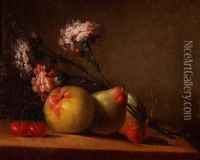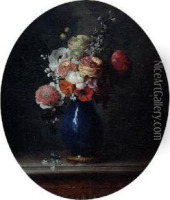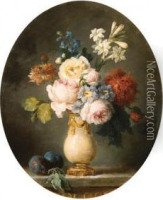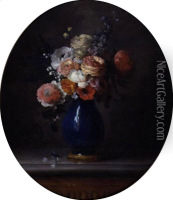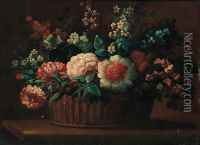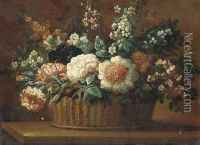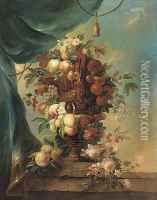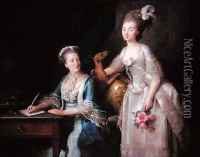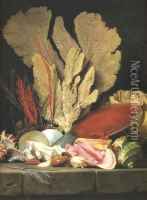Anne Vallayer-Coster Paintings
Anne Vallayer-Coster was a prominent 18th-century French painter known for her exceptional still-life works and portraits. Born in Paris on December 21, 1744, she was the daughter of a goldsmith who worked at the court of Louis XV. Her environment and family connections provided her with early exposure to the art world, and she received her initial artistic training from her father. Later, she became a pupil of Claude Joseph Vernet and Jean-Baptiste Greuze, who were among the leading artists of the time.
Vallayer-Coster gained recognition early in her career. In 1770, she was admitted as a member of the Académie Royale de Peinture et de Sculpture, an exceptional achievement for a woman at that time. Her admission was based on the merits of two of her still-life paintings, which were praised for their technical skill and attention to detail.
Throughout her career, Vallayer-Coster was favored by Marie Antoinette, the Queen of France, who was a significant patron. Her association with the queen helped to elevate her status in the art community and secured her numerous commissions from the French aristocracy. Despite the French Revolution, which brought about a change in the patronage system and a general decline in the arts, she managed to continue her work and maintain her reputation.
Vallayer-Coster's paintings are characterized by their vivid realism, intricate compositions, and vibrant colors. She often depicted flowers, fruit, and objects with a rich texture, demonstrating an exceptional ability to render materials such as metal, glass, and textiles. Her mastery in still-life painting led to her being regarded as one of the finest exponents of the genre in the late 18th century.
Her work was widely exhibited at the Paris Salon, the official art exhibition of the Académie des Beaux-Arts in Paris. Vallayer-Coster's paintings were well-received, and she continued to exhibit her work until 1817, a year before her death. She passed away on February 28, 1818, leaving behind a legacy of being one of the few successful female artists of her time. Her paintings remain highly regarded and are held in numerous museum collections around the world, including the Louvre in Paris and the Metropolitan Museum of Art in New York.
